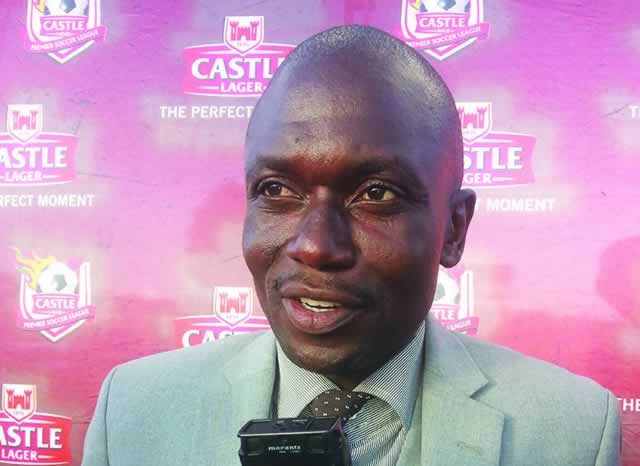Destruction of historical monuments ill-advised

Saul Gwakuba Ndlovu
The “Rhodes Must Fall” campaign has now reached Britain where a statue of Cecil John Rhodes at Oxford’s Oriel College is likely to be removed from its pedestal and thrown into either some dark storeroom as was the case with that which was formerly at Cape Town University, or placed in the city’s historical museum.
The campaign is a development that is against what we may reasonably call a ghost of colonialism in that there is virtually no colony in the world today.
Be that as it may, the campaign is bent on removing from our sight any objects or signs that honour one of Britain’s greatest imperialists, Cecil John Rhodes.
That man was so much an admirer of British imperialism, nay, of British social, cultural and political perceived superiority that his life’s passion was to turn the entire world into a British territory.
He made that emphatically clear in his will. He effectively burst onto South Africa’s political scene in about 1881, but loomed large over Africa north of the Limpopo River and South of Tanzania, DRC and determined that region’s political direction from 1888 until he breathed his last in June 1902.
Rhodes seized what we call Zimbabwe today by subterfuge and armed violence in the early 1890s, ruthlessly killing the natives of the country, grabbling their land, livestock and burning their villages in order to establish British social, political economic and cultural dominance over the area.
The country was later named Southern Rhodesia (Southern “because” it is South of the Zambezi River) in his honour. We are by and large acquainted with Rhodes’s deeds (crimes and otherwise) in this country, as well as with the large number of people who were killed in wars caused by Rhodes.
What is of much interest to us today is whether or not we should obliterate Rhodes’ monuments from our midst or regard them as part of our national heritage in the same way we do with some buildings, railway stations and even trees and some rocks.
There is certainly no wisdom in destroying that which represents or reflects the past on the ground that those monuments, buildings or whatever else represents or reflects some sad or tragic period of our past.
The past is an important national heritage however it was, tragic or glorious. To destroy monuments that stand for the past is to try and live a very big lie! Rhodes’s statue was erected by those who admired his imperialist dreams, those who we later defeated and replaced in office. We also should put up statues of our own heroes side by side with those of the villains we defeated.
Would it be a wise decision for the people of Tanzania for example to destroy Bagamoyo simply because that place and its name reflect how cruelly slaves were treated by their Arabic captors?
Of course not! It would actually be an example of foolishness in that it would deprive posterity of historical evidence of how a section of the human race was at some period most inhuman towards another section because of sheer avarice.
Similarly, Egyptians would be utterly stupid to destroy the pyramids or burn the mummies of the pharaohs entombed therein just because they (the pyramids) were built by hundreds of thousands of slaves.
There is no wisdom in destroying the means by which one has been persecuted or in obliterating one’s persecutor’s footprints.
In Zimbabwe’s case, it was folly to remove Rhodes’s statues from our streets. We should have instead left them where they were but erected those of Joshua Nkomo, for example, and put them up facing the south as opposed to those of Rhodes which were facing northwards.
His statues were facing north because his colonisation programme was from the “Cape to Cairo”, whereas our liberation (decolonisation) struggle was, in effect, from Cairo (Egypt in 1953) to the Cape. We foolishly removed a monument of the man who caused as much colonial suffering, and in its place put that of a liberator (in Bulawayo at least) and in that manner we will cause posterity to ask: “From whom did he liberate the country?”
Removal of Rhodes’s monuments from wherever in Zimbabwe and South Africa was caused by overwhelming, short-sighted emotion at the expense of visionary wisdom and sound rationale.
The prevailing thread in this argument is that it is not wisdom to remove or destroy historical monuments from the sight of the public as a way to heal historical injustices. Such injustices can be healed by either materially compensating the victims and by introducing social and cultural reconciliation policies.
In Zimbabwe, the best way to deal with the Cecil John Rhodes era is for the state to claim reparations from the Rhodes estate. Rhodes plundered this country ruthlessly. Immediately after the 1893 defeat of King Lobengula, his British South Africa Company (BSAC) seized more than a quarter of a million cattle from black communities countrywide on the pretext that they belonged to the vanquished Ndebele monarch.
Quantification of what the nation can claim should not be impossible since some BSAC financial records are extant, and his estate is functional in South Africa and the United Kingdom.
Some of the proceeds of the estate can be used for the construction of either a high school or a hospital in each of the country’s 10 provinces.
Rhodes was very unfair to Southern Rhodesia (Zimbabwe) in that whereas the country bore his name and his mortal remains, he bequeathed well-nigh nothing to it in monetary terms.
It is a historical fact that Rhodes formed the BSAC to occupy and colonise the region that lies north of the Limpopo River. He spent a fortune to realise that dream and once achieved, he willed that should he die, he should be buried on the Malindandzimu locality of the Matobo Hills.
Below that huge scenic boulder stretches a vast piece of fertile land that he seized and later called his own. A memorial primary school was constructed on a portion of it for white children.
It is called Rhodes Estate Preparatory School (REPS). He had some property in the Inyanga region as well. However, the author of this article is not aware of anything tangible that Rhodes left for this country’s black people.
Speaking as a guest – of – honour at an Afrikaner Bond congress at Kimberly on March 30, 1891, Rhodes said, among many things: “I’ve obtained enormous subscriptions in order to found a teaching University in the Cape Colony. I saw at Bloemfontein the other day the immense feeling of friendship that all the members had for the Grey Institutes where they had been educated… I said to myself if we could get a teaching university founded in the Cape Colony, taking people from Bloemfontein, Pretoria, and Natal, let me even say they’ll go back to Mashonaland tied to one another by the strongest feelings that can be created.”
Rhodes was talking about founding what was later called the University of Cape Town, initially an all – white institution. Not once in his life did he ever propose the founding of a school for black people.
When the University College of Rhodesia and Nyasaland (now University of Zimbabwe) was constructed in the mid-1950s, some thought that the Rhodes estate would donate heavily since the university college was in the same country as where the mortal remains of Rhodes are interred, but that was not to be.
The author of this opinion article is certainly open to correction in case the estate was secretly financially or otherwise involved in the founding of that institution.
As far as the author is aware, Rhodes rather grudgingly left the responsibility of educating the black community to the Christian missionaries.
In South Africa, Fort Hare University College was founded by a black intellectual, Dr John Tengo Jabawu, a highly educated black leader who founded a weekly newspaper, Imvo Zabantsundu, that circulated mainly in the Eastern Cape Colony. Some social commentators who lived in Rhodes’ time observed that he was not at all interested in supporting African education because he believed that “a native in a classroom was a step away from a native demanding white jobs, the vote or a say in the running of the country.”
However he encouraged missionaries to train black men to become agriculturists, carpenters, bricklayers, shoemakers, dressmakers, cooks, preachers, medical orderlies, hygienists and stable – grooms. He had no respect for black women.
Most of his millions he bequeathed to Britain and some to South Africa. Zimbabwe has surely, a legally sound basis to claim a respectable amount from his estate, a much more worthwhile thing to do than to initiate or participate in meaningless, hate–inspired personal campaigns against a die–hard British imperialist who died 113 years ago.
Incidentally, it is very interesting that a week or two ago the Japanese government agreed to pay the South Korean administration $3 million as compensation for a number of South Korean women who were used as sex slaves for Japanese soldiers during World War II.
World War II ended 70 years ago. Some of those women are still alive, and will actually be given, if they have not yet, the money in cash.
In Zimbabwe’s case, there is no chance that any of the people who were robbed of their cattle by the BSAC could still be living as the crime was committed some 122 years ago.
However, the country is still very much there and so is the fabulously rich estate of Cecil John Rhodes, an Englishman who actually believed that the English people were destined to rule the whole world.
Saul Gwakuba Ndlovu is a retired, Bulawayo-based journalist. He can be contacted on cell 0734 328 136 or through email. [email protected]










Comments